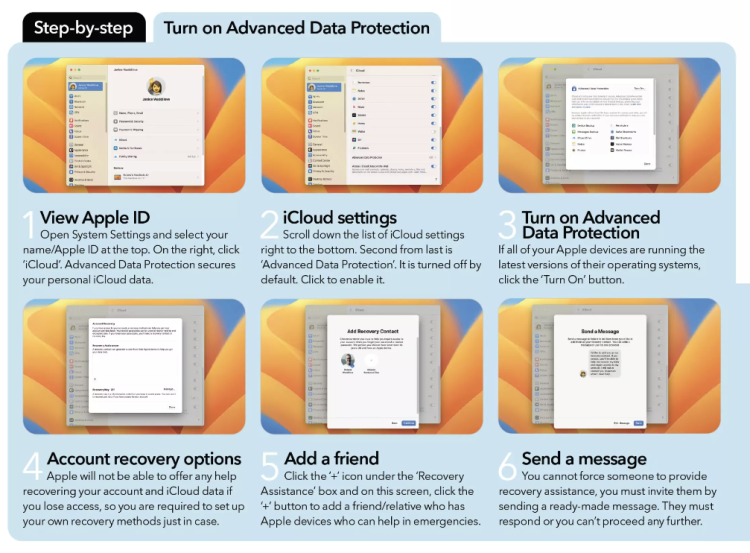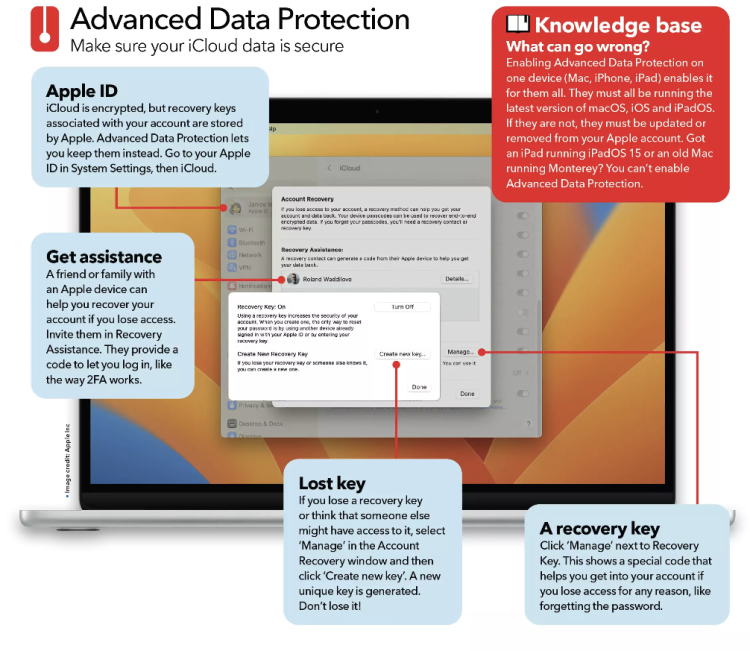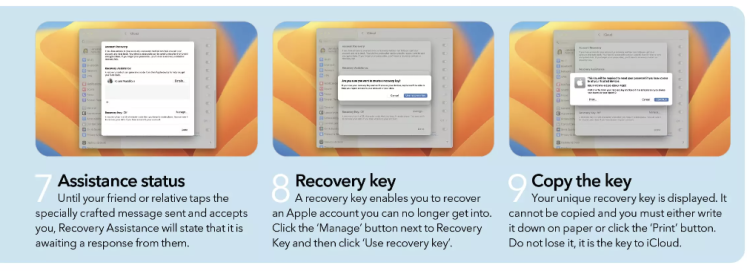Apple iCloud
Apple iCloud is an embedded service of the Apple's Digital Ecosystem [1]. Since the impact of the usage of Apple iCloud is great, this article tries to help the user.
Apple's own Description
iCloud is built into every Apple device. That means all your stuff — photos, files, notes, and more — is safe, up to date, and available wherever you are. And it works automatically, so all you have to do is keep doing what you love. Everyone gets 5GB of free iCloud storage to start, and it’s easy to add more at any time.
Introduction
Apple's iCloud is used to access data on all Apple device (iPad, iPhone, Mac). In the System Preferences of the devices the user can decide for himself which applications he wishes to share over the devices. Examples are:
- Business Apps i.e. Calendar, Contacts, Mail, Notes and Reminders
- Financial Apps, i.e. Stocks and Wallet
- Health Apps i.e. Health
- Miscellaneous Apps, i.e. iBooks, Game Center, Maps, Photos, Safari, Siri
- Security Apps, i.e. Keychain
- System: iCloud Backup
The above Apps are all Apple Propriety Apps. iCloud can also be used for third-party apps. Examples:
- Buienradar, Star Walk 2, MeteoEarth, WheaterPro
- Camera+
- Dropbox and Google Drive
- Etc.
Next the apps you can store folders to the iCloud Drive. See iCloud Drive.
Propriety Apple Apps
3rd Party Apps
iCloud Drive
iCloud Drive lets you securely access all of your documents from your iPhone, iPad, iPod touch, Mac, and Windows PC. So no matter which device you’re using, you always have the most up to date documents when you need them.
What can you do with iCloud Drive? [2]
- Keep files and folders up to date across all of your devices.
- Create new files and folders from iCloud-enabled apps.
- Work on the same file across multiple apps.
- Access the files from your Mac Desktop and Documents folder everywhere that you use iCloud Drive.
- Share files with anyone you like.
Requirements
- Update your iPhone, iPad, or iPod touch to the latest iOS and your Mac to the latest macOS.
- Make sure that you’re signed in to iCloud with the same Apple ID on all of your devices.
- Set up iCloud on all of your devices and turn on iCloud Drive.
- If you have a Windows PC, update to Windows 7 or later and download iCloud for Windows.
Access Files
How do I access my files in iCloud Drive? There are multiple ways you can access your files in iCloud Drive:
- Using any supported web browser, you can use iCloud Drive at iCloud.com.
- On your Mac, you can go to iCloud Drive in Finder.
- On your iPhone, iPad, or iPod touch with iOS 11 or later, you can access your files from the Files app.
On iOS 9 or iOS 10, you can access them from the iCloud Drive app. - On your PC with Windows 7 or later and iCloud for Windows, you can go to iCloud Drive in File Explorer.
When you add your Desktop and Documents to iCloud Drive, all of your files move to iCloud. On your Mac, you can find the files on your Desktop and in your Documents folder in Finder under iCloud. If you add a second Mac Desktop, you'll find those files in the Desktop folder in iCloud Drive. A folder is created with the same name as your second Mac.
Share an iCloud storage plan with your family. [3]
With Family Sharing, you can share a single iCloud storage plan with up to five other family members.
- Apple Family Sharing, My personal and private Apple Family Sharing.
iCloud Advanced Data Protection
| Key takeaway | Implications | What is it? |
|---|---|---|
|
Advanced Data Protection secures your iCloud data with end-to-end encryption, using keys stored on local, trusted devices like your iPhone.
|
Do you have important information in iCloud that you want to keep private?
|
Advanced Data Protection is Apple’s name for end-to-end encryption for your iCloud data.
|
| Recovery contact | Family Sharing | How to turn on Advanced Data Protection |
|
Enabling Advanced Data Protection affords your data better protection, but it also means that accessing your data depends on you having a recovery key or at least one trusted contact you can use if you lose access.
|
Choosing to turn on Advanced Data Protection for iCloud has no impact on other members of your Family Share group.
|
Follow the steps provided by Apple support [5].
|
Source: HowToGeek, Should you enable advanced data protection.
Enable Advanced Data Protection
See also
- iMore.com, Everything you need to know about backing up to iCloud.
Reference
- ↑ What's a digital ecosystem A digital ecosystem is a distributed, adaptive, open socio-technical system with properties of self-organization, scalability and sustainability inspired from natural ecosystems.
- ↑ iCloud Drive, Apple's iCloud Drive FAQ.
- ↑ Apple Support, Family Sharing.
- ↑ HowToGeek, How to set up a recovery contact on iPhone, iPad and iMac.
- ↑ Support Apple, How to turn on Advanced Data Protection.


